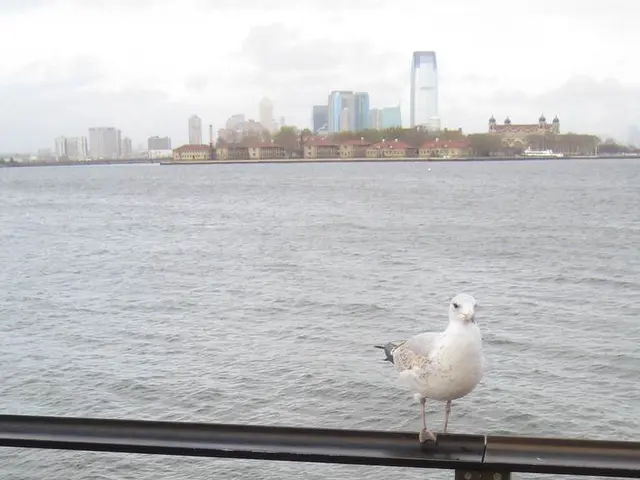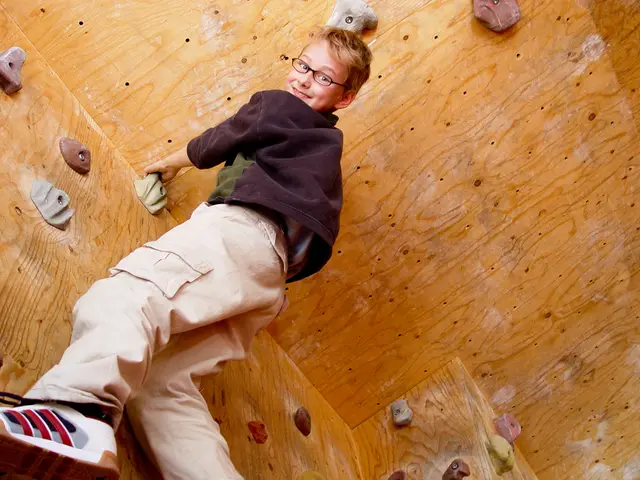Exploring the Impact of Visual Strategies in Revealing Deeper Cinematic Implications
In the realm of filmmaking, visual techniques play a pivotal role in conveying deeper themes and psychological undercurrents. Directors and cinematographers deliberately employ colour palettes, lighting, framing, and camera angles to shape the viewer's emotional and cognitive response to the narrative.
Colour palettes set the mood and symbolize themes. For instance, desaturated or cold tones like green and blue, often found in horror films, evoke unease, dread, and a sense of the unnatural. Shifting between contrasting colours can create emotional or thematic irony, enhancing the overall impact of the story.
Lighting influences psychological tone and tension. High-contrast lighting with stark shadows, as seen in horror films, creates suspense and fear by visually isolating characters or suggesting menace. Cinematographers manipulate lighting styles to evoke specific atmospheres, such as surreal or uneasy feelings through unnatural or moody illumination.
Framing and composition focus attention, suggest relationships, or induce psychological effects. Techniques like negative space in a frame can create anticipation or emphasize isolation. Mirrored reflections or distorted angles can produce a sense of psychic vertigo or emotional disorientation, deepening the thematic complexity.
Camera angles and movement shape perceptions of power, vulnerability, and emotional state. Low-angle shots might enhance an antagonist’s menace, while high-angle shots make protagonists appear vulnerable. Handheld camera work offers raw intimacy, while long takes immerse viewers in unfolding action or emotional states.
By combining these visual elements, directors and cinematographers craft a layered film language, where each visual choice supports underlying narrative themes and evokes psychological depths without explicit exposition. This visual storytelling engages audiences more deeply, making abstract themes tangible and emotionally resonant.
Zooms can draw attention to specific details or characters, highlighting their importance or eliciting a closer emotional connection. Crane shots offer expansive views, providing context or transitioning between different narrative elements smoothly. A low-angle shot can imbue a character with a sense of dominance or menace, while a high-angle shot might render a character vulnerable or insignificant.
Handheld shots convey realism and immediacy, often used to heighten tension or bring a documentary-like authenticity to the scene. Colour theory is an indispensable tool for directors and cinematographers aiming to infuse their work with emotional depth and narrative nuance.
Warm hues can suggest intimacy and comfort, while cooler tones may indicate isolation or detachment. High contrast lighting might be used to highlight moral ambiguity, whereas soft, diffused light could suggest innocence or nostalgia. By deliberately choosing specific colour palettes, filmmakers can create a visual language that complements the film's dialogue and plot, enriching the viewer's experience without the need for explicit exposition.
High-Key Lighting creates a bright, even illumination that minimises shadows, often used in comedies and musicals to evoke a cheerful, optimistic atmosphere. Cool colours like blues and greens can suggest calmness, melancholy, or isolation. Framing and composition can convey relationships, power dynamics, or internal states. A character framed in a tight close-up might indicate vulnerability, while a wide shot could imply freedom or loneliness.
Visual techniques in cinema serve as a profound language that transcends dialogue, allowing filmmakers to embed symbolism within the frame. This rich visual vocabulary enables storytellers to convey complex emotions and themes without relying solely on dialogue, enriching the viewer's experience and creating a more immersive cinematic journey.
- Critics often review the meticulous use of colour palettes in animation, considering their ability to set moods and symbolize themes.
- The genre of documentary filmmaking usually employs natural lighting to maintain a sense of authenticity and foster a connection with the subject matter.
- A film's director might choose warm hues to reflect the characters' relationships or personal growth, highlighting their journey toward self-discovery.
- Film studios often collaborate with fashion-and-beauty professionals to enhance costume designs and make-up, ensuring that on-screen characters fit seamlessly into their portrayed lifestyles.
- The visual language of cinema can extend beyond scenes and films, shaping perceptions of career development and personal growth opportunities for aspiring filmmakers.
- In travel documentaries,cinematographers often capture stunning landscapes with expansive views, using crane shots to immerse viewers in foreign cultures and remote destinations.
- A film's director can use visual techniques to explore the complexities of relationships, employing intense close-ups to delve into characters' inner emotions or unrequited affections.
- Handheld camera techniques can lend a sense of urgency or anxiety to scenes involving food-and-drink, making the viewer feel as if they are experiencing the scene firsthand.
- The colour contrast in home-and-garden shows can symbolize the transformative journey between the old and the new, reflecting the making-over process of the spaces depicted.
- Cinematographers may employ high-key lighting to evoke a feeling of carefree innocence in scenes involving children, complementing the simplicity and optimism inherent to their lifestyle.





